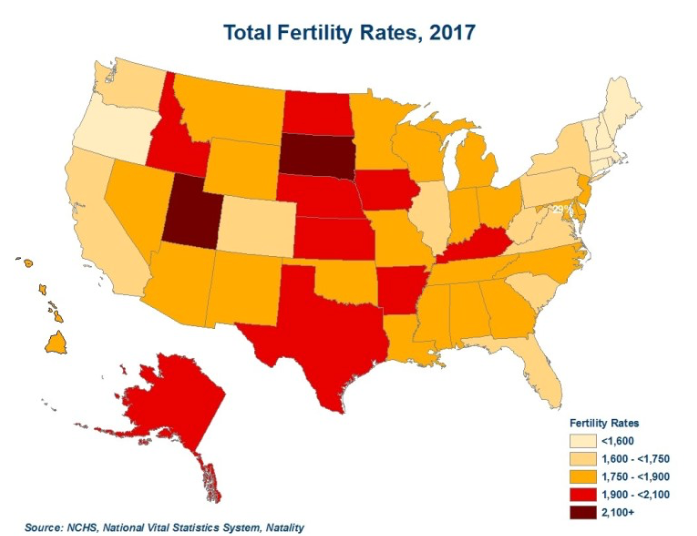U.S. birth rates have fallen to their lowest levels in over three decades. Just 3.8 million births were recorded in the country last year, which is down 2% from a year ago and the fourth year in a row in which the rate has declined, according to data from the Center for Disease Control and Prevention.

All age groups of women under 35 saw a decline in birth rates.
These numbers are a worry for the housing industry, experts say, because as fewer women marry and start families before the age of 35, that makes them less likely overall to start their own household. In the long-term this will lead to less demand for homes in the single-family housing sector, which is the preferred choice for those with young families, the National Association of Home Builders says in its Eye on Housing blog.
Some might feel that any impacts could be years off, but in fact the effects are already being felt – with a record high number of young adults still living at home with their parents, or sharing homes with roomates.
“Declining birth rates mean lower demand for rental housing two decades from now, when those born in recent years will be entering the rental market,” the NAHB notes. “The effects will spread to the single-family market in the following years and will persist for years to come.”
The U.S. fertility rate now stands at just 1,728 births per 1,000 women, which is a record low, the NAHB says. Its researchers add that housing affordability could well be a factor that’s contributing to this decline.
“Solving housing affordability issues would not only help halt declines in fertility and birth rates but would also boost population growth by attracting migrants from out of state and foreign-born immigrants,” the NAHB researchers note.
Only two states in the nation have seen fertility rates move higher—Utah and South Dakota. On the other hand, Washington, D.C., has the lowest fertility rate in the country, followed by all six states in New England and then Oregon.
In general, the coastal states tend to also have lower fertility rates, while central states tend to skew higher.